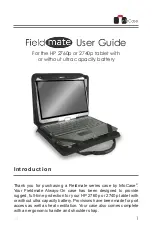
136
IBM Power 750 and 760 Technical Overview and Introduction
3.4.5 PowerVM Live Partition Mobility
PowerVM Live Partition Mobility allows you to move a running logical partition, including its
operating system and running applications, from one system to another without any shutdown
or without disrupting the operation of that logical partition. Inactive partition mobility allows
you to move a powered-off logical partition from one system to another.
Partition mobility provides systems management flexibility and improves system availability:
Avoid planned outages for hardware or firmware maintenance by moving logical partitions
to another server and then performing the maintenance. Live Partition Mobility can help
lead to zero downtime maintenance because you can use it to work around scheduled
maintenance activities.
Avoid downtime for a server upgrade by moving logical partitions to another server and
then performing the upgrade. This approach allows your users to continue their work
without disruption.
Avoid unplanned downtime. With preventive failure management, if a server indicates a
potential failure, you can move its logical partitions to another server before the failure
occurs. Partition mobility can help avoid unplanned downtime.
Take advantage of server optimization:
– Consolidation: You can consolidate workloads running on several small, underused
servers onto a single large server.
– Deconsolidation: You can move workloads from server to server to optimize resource
use and workload performance within your computing environment. With active
partition mobility, you can manage workloads with minimal downtime.
Hardware and operating system requirements for Live Partition Mobility
PowerVM Live Partition Mobility requires systems with POWER6 or newer processors
running, PowerVM Enterprise Edition and is supported for partitions running the following
levels of operating systems:
AIX 5.3 TL7 or later
IBM i 7.1 TR4 or later
SUSE Linux Enterprise Server 10 Service Pack 4 or later
Red Hat Enterprise Linux version 5 Update 1 or later
The Virtual I/O Server partition itself cannot be migrated.
System requirements for source and destination
The source partition must be one that has only virtual devices. If there are any physical
devices in its allocation, they must be removed before the validation or migration is initiated.
An N_Port ID Virtualization (NPIV) device is considered virtual and is compatible with
partition migration.
The hypervisor must support the Partition Mobility functionality (also called migration process)
that is available on POWER6, , POWER7 and processor-based
hypervisors. Firmware must be at firmware level eFW3.2 or later. All
processor-based hypervisors support Live Partition Mobility. Source and destination systems
can have separate firmware levels, but they must be compatible with each other.
Requirement for IBM i: Live Partition Mobility on IBM i is not supported on POWER6 or
-based servers.
















































